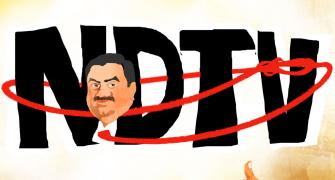In the chair's summary of the last G-8 conference in Heiligendamm, Germany, there was no mention of food prices or agriculture.
What a difference a year makes.
Since the G-8 last assembled in June 2007, food prices have reached unprecedented heights, threatening to push millions into poverty.
In pictures:
World's most expensive food
How experts would save the earth
Last week, the general director of the United Nations' Food and Agriculture Organization, Jacques Diouf, said the rising prices of basic foodstuffs have added 50 million additional people to the ranks of the hungry. And World Bank President Robert Zoellick has estimated that the surging prices could push 100 million more people deeper into poverty.
Aid organizations are strapped for cash. Soaring prices forced the UN's World Food Program, based in Rome, to embark on a massive fund-raising campaign to combat what executive director Josette Sheeran called a "silent tsunami"--a global crisis that, in some fashion, will strike every nation.
In pictures:
World's happiest places
World's priciest restaurants
Overall, countries like Bangladesh, Ethiopia and Haiti, which import most of their food, stand to hurt the most. And in the poorest countries, the rising prices are causing hardship for farmers, whose production volumes are simply too small to reap a windfall.
One long-term solution is improving agriculture in the developing world so that more countries can one day feed themselves. In fact, 2008 has been dubbed the International Year of the Potato as part of an effort to boost production of the tuber globally. Potatoes are high energy and easy to grow, and experts consider them a good crop for food security because they are not widely traded. But potatoes can only do so much so fast; for many countries, harvests that fill the national stomach are still years away. Nobody expected food prices to rise so high so quickly.
In pictures:
World's most expensive tasting menus
World's most patriotic countries
"It caught the world by surprise, to be honest," says Nancy Roman, the director of communications and public policy for the World Food Program. "We were early in identifying rising food prices as a problem, and that was last summer, before this was on the front pages everywhere. But we didn't anticipate just how far this would go."
By all accounts, it's gone too far. The World Bank estimates that 41 countries have suffered losses of between 3 per cent and 10 per cent of their gross domestic product because they've been hammered by soaring prices of food and fuel. More than 30 countries have experienced rioting over food shortages, according to the World Bank.
The humanitarian need to ease the crisis is obvious; people shouldn't be starving. Perhaps less obvious is the global economic threat: Stagnant or collapsing growth in the developing world combined with political instability has the potential to drag down growth everywhere.
People living on a dollar a day are likely spending almost their entire income on food. If the prices double, the amount of food they can afford is halved.
To measure the world's most expensive food, we looked at data from the UN Food and Agriculture Organization. Rather than look at the most expensive food in absolute terms--of course, Beluga caviar and hippopotamus steaks are more expensive than rice--we looked at everyday commodities whose prices have soared the most in the last year. The average family's grocery bill is expanding because of these goods, like rice and butter.
Using information from the commodity prices database maintained by the Commodities and Trade Division of the FAO, we averaged the price of various commodities from January 2008 to April 2008 (the most recent month for which data were available on a wide range of food items) and compared these figures with prices during the same period one year ago.
Some commodities have peaked, and their prices seem to be easing. The costs of rice and wheat, which had nearly doubled, have slacked some. But they are still dramatically higher than a year ago. Some crops, like corn and the grain sorghum, continue to climb.
Prices for food can be highly inter-related. Increased demand for corn, largely driven by production of ethanol as an alternative fuel to gasoline, has caused American farmers to plant less soybeans in favor of corn fields. But fewer soybean fields mean less soy oil, driving up not only the price of soybeans but also other oilseeds.
Using this data, we found that sunflower seeds and its products have experienced the most dramatic increase in prices--up nearly 150 per cent from last year.
Behind the price increases, one sees a perfect storm of factors fueling the "silent tsunami": unexpected bad weather, from floods to droughts, pillaged fields across the world; soaring oil prices lifted costs of producing and transporting the crops; prices rose along with demand from both an ever-growing global population and a rapidly expanding American ethanol industry; and as global prices soared, a number of countries implemented beggar-thy-neighbor export curbs, driving up prices even further.
Global leaders cannot do much about the weather. But the remaining factors in the food crisis are manmade. Heads of state have the ability, and the forum, to address the problems this week at the G-8 summit in Hokkaido, Japan. The question is--do they have the will?








